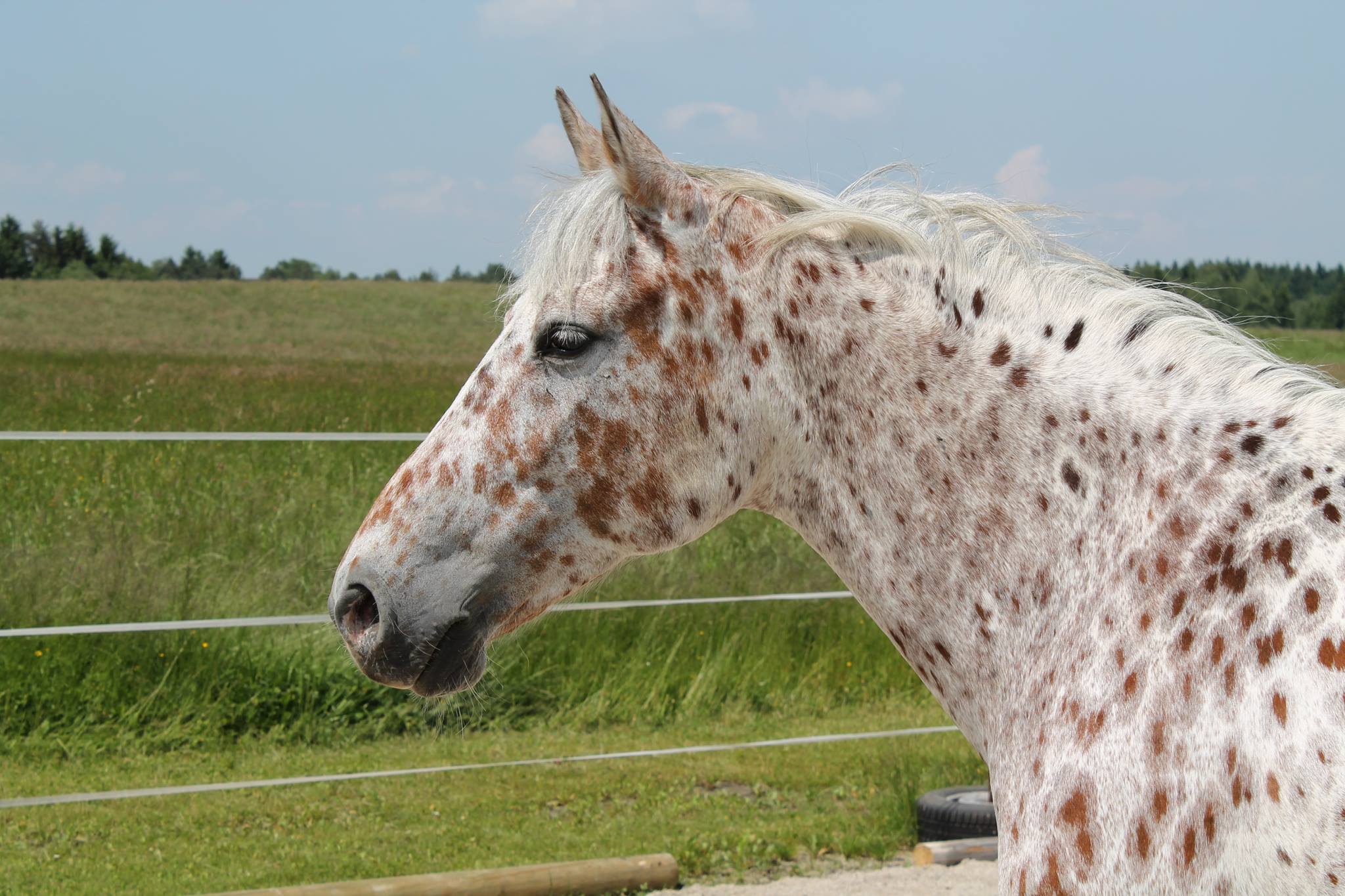
Walkaloosa Horse Association History
Although the Walkaloosa Registry is fairly new, the Walkaloosa horse has been around for centuries.
Appaloosa breeders claim to have the oldest recognizable breed known to man, a claim which is backed by drawings of spotted horses in the pre-historic ice caves of France. Paso Fino breeders consider their breed to be the oldest breed in the Western Hemisphere; the ancestors of the Paso Fino came to the New World with Columbus on his second voyage from Spain. The Paso Fino horses were the preferred mounts of the Conquistadors; Paso Fino literally translated is “smooth gait” and some of those horses also carried the spotted coat patterns of what is known as the Appaloosa today.
As horses made their way north, the Nez Perce Indians eventually claimed them and wisely preserved their color and smooth gait through selective breeding. They were very proud of their spotted horses and well pleased with how these versatile horses could move their households quickly without undo jarring of belongings or rider.
These horses eventually became the horse of the rancher, who appreciated the unique gait, calling it the Indian Shuffle. Cowboys were said to be willing to pay up to $50.00 more for a “Shuffler” because the easy gait saved wear and tear on the cowboy and his gear, as it had for the Spaniards and the Indians before him.
With the large percentage of Quarter Horse, Arabian and Thoroughbred in today’s Appaloosas, many breeders today have never even heard of a “Shuffler”.

The Walkaloosa Horse Association was founded in 1983 to preserve the history and pedigrees of these fantastic pleasure, work and performance horses. Visit them online here.
In order to qualify as a Walkaloosa, a horse must have Appaloosa coloring and perform an intermediate gait other than the trot. Horses must meet one of the following three criteria:
- Be the progeny of a registered Walkaloosa stallion & registered Walkaloosa mare, or
- Show Appaloosa coloring and demonstrate an intermediate gait other than a trot, or
- Be the product of verifiable Appaloosa blood and gaited horse blood.
Walkaloosa horses come in a variety of colors and patterns. There are four Appaloosa characteristic traits that can be found in Walkaloosa horses:
- Coat patterns
- Mottled skin
- White sclera
- Striped hooves
The most distinctive Walkaloosa feature is its colorful coat, which can be found in a variety of patterns, such as:
- Blanket
- Blanket with spots
- Roan
- Roan Blanket
- Roan Blanket with spots
- Varnish / Lighting Marks
- Leopard - white body with spots
- Roan / Marbling - frost coat with white specks
- Snowflake - dark body color with light spots
Walkaloosa patterns can appear in many different ways, and can be a variation of all of the above.

WALKALOOSA HORSE CHARACTERISTICS
GENERAL IMPRESSION: Walkaloosa horses come in many shapes and sizes. The smooth natural gaits and colorful coat patterns make this wonderful animal unique.
HEAD: Eyes ringed with white sclera, large and kind, widely spaced. Profile may be straight or slightly dished. A coarse head or Roman nose is not desirable. Muzzle should be clean and fine. Skin may have mottling around eyes and/or lips.
NECK: Well set on the shoulders, medium to long in length. Throatlatch well defined; neck may be slightly arched.
FOREHAND: Sloping shoulders, good depth through the heart girth, moderately wide chest, well muscled, but not muscle bound. Withers should be well defined, but not pronounced.
BACK: Relatively short and strong.
CROUP: Slightly sloping. Tail well set and carried gracefully. Hip long and reaching.
LEGS: Straight, clean, and flat boned. Extreme fineness of bone is not desirable. Hooves striped, able to carry the horse’s weight.
SIZE: 13 to 17 hands. 14.2 to 15.3 hands being most typical. Weight 600 to 1,300 pounds. May be of a stout or a refined build.
COLOR: Coloring typical of that found in the Appaloosa. Patterns including, but not limited to Leopard, Blanketed, Roan, and Snowflake.
DISPOSITION: Gentle, kind, and willing. Suitable for amateurs.
USES: Outstanding pleasure and trail mounts. Used for field trials, pleasure riding, range work, cattle work, and the show ring.

you can find more interesting reading is our section on Health & Education.

































